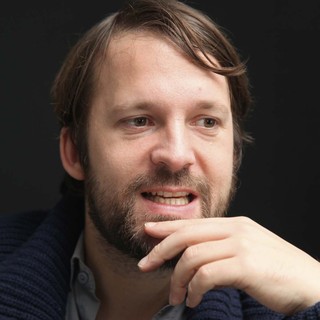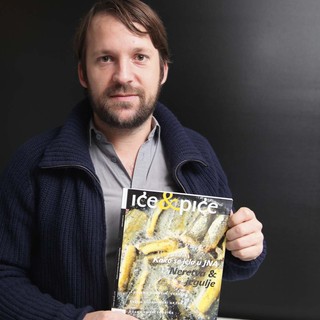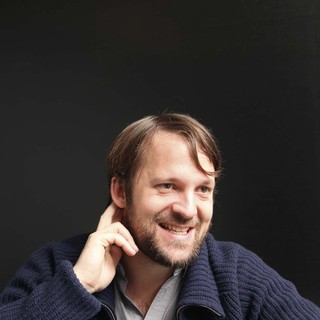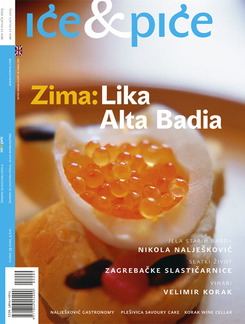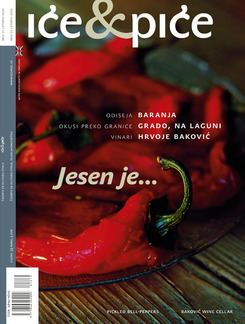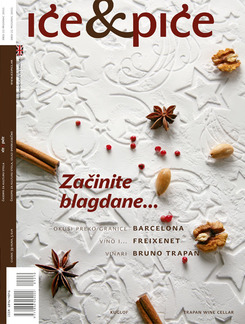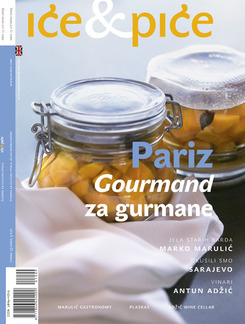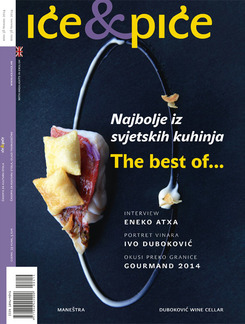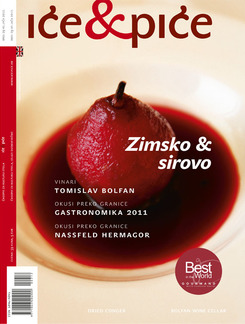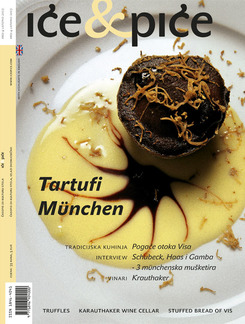Two days ago, Noma had 1,204 reservations on its waiting list, and exactly two years ago when the restaurant got to the top of the list, we have had a total of fourteen guests for lunch and dinner, René Redzepi recalls last April in London as he receives San Pellegrino’s; The World’s Best 50 Restaurants 2012 award for the best restaurant, organized by British vocational magazine ‘Restaurant’, for the third year running.
Had someone said four or five years before the great shift at the top of the list, when Noma overthrew Ferrano Adria’s great El Bulli, that Denmark will soon be a gastro-superpower and that one Copenhagen restaurant will be at the forefront of world’s best restaurants, everyone would probably politely laugh, including the Danes themselves.
But, in 2010, in the days after the awards, the media couldn’t say enough nice things about Noma and Redzepi himself, pointing out that he does it differently, something quite special and new and that his style is truly creative and unique. They immediately concluded with elation, that, although many chefs in the world try to use the best seasonal local ingredients, nobody does it as consistently and at such a high level as Noma. But crucial to their success was the fact that Noma was among the first that discovered rare traditional local ingredients, and subjected them to the most modern culinary techniques, inadvertently starting the natural cooking movement and becoming the spark that will spread similar ideas across the globe. Just as Noma’s cooking is based exclusively on Nordic foodstuffs, chefs in Australia, Canada, Japan, South America, and more European countries today base their dishes on ingredients being grown for them by farmers in the country, discovered for them by foragers and fished for them by whole fishing crews.
In the case of Noma, the biggest paradox was that at the forefront of the new Nordic culinary movement stood the son of an immigrant from Macedonia, who only partially belonged to Danish culture. Although born in Copenhagen, to an Albanian father and a Danish mother, Redzepi spent a lot of his childhood in Macedonia, where life was pretty different than the one he knew in Denmark. It was there, it would later become clear, that he unknowingly developed a love of good food and the eating ritual, and also of flavors specific to the place (That is why some of my favorite flavors are watermelon and red paprika, he’ll say).
Since he had no idea what to do and was not good at school, he dropped out of ninth grade, at fifteen. Chance led him to catering school, following his friend who wanted to become a cook. He was quickly hooked, reading about French cooking, great chefs like Carême and Escoffier, about the organization in French restaurants and kitchens, so he took down posters of pop stars and put up those of then popular chefs - Robuchon and Ducasse.
The first important step in his career was an apprenticeship he got the very next year at a local family restaurant, Pierre André, which offered traditional French cooking and where René stayed for four years. In that kitchen he made his first culinary steps, mostly preparing stocks, roasting meat, making puffed pastry and bread.
The ambitious young man turned to France afterwards, thinking, like many in his surroundings, gastronomy referred exclusively to French cooking. To get to the right place, but also to get the job more easily, he targeted a top-rated, but not world known restaurant – Le Jardin des Sens in Montpellier, owned by twins Jacques and Laurent Pourcel. He wrote to them and got the contract, plunging him in the ruthless hierarchy of a three-Michelin-star French kitchen brigade, at nineteen.
He travelled quite a bit along the way and ate at some of the best European restaurants of the time. Once he visited Arzak, a San Sebastian based gastro-temple, owned by Juan Mari Arzak, the father of new Basque cooking. As luck would have it, René told us, he was served by Juan Mari’s daughter Elena, who had just started working for her father and who is today there as Arzak’s chef alongside Juan Mari (to make matters even more significant, some 15 years later, René Redzepi and Elena Arzak are currently the world’s best male and female chefs, at least according to ‘Restaurant’). Since young René did not have money for a complete meal in such an expensive restaurant, he ordered only water with the food. When Juan Mari went greeting guests from table to table, he talked to Redzepi as well and asked him how he could drink water with such food. Finding out the reason, he immediately sent a sommelier with a bottle of wine to treat the young cook.
Second important moment in René’s career happened in France. It is there that he in 1998 read a newspaper article about a nearby Spanish restaurant, just across the border, which impressed him very much. He booked a table two weeks in advance and drove three hours to El Bulli, a restaurant that was already producing revolutionary dishes, but that had yet to become a worldwide sensation. It was an experience that will completely change his life. He was amazed by the food he tasted there, as well as by the chef’s originality, and the fact that the dishes were nothing like anything he tasted before.
The very next season he was working in El Bulli’s kitchen, where he learned more about freedom of ideas and building an original culinary world than he did about revolutionary cooking techniques. In El Bulli he met Massimo Botturo, today the chef of Osteria Francescana in Modena, with whom he became inseparable, and with whom he shares many culinary convictions today. During his second season in El Bulli, in 1999, he also met Grant Achatz, today the chef of America’s most progressive restaurant, Alinea, who spoke neither French nor Spanish, so René was constantly coming to his aid. At the time, Grant Achatz was a sous chef in Thomas Keller’s already legendary restaurant in Napa Valley- French Laundry.
On returning to Copenhagen, Redzepi started working as the head cook of Kong Hans Kælder restaurant, one of the city’s most ambitious restaurants ever since the seventies. Owing to his friendship with Grant Achatz, he spent four months of 2001 in French Laundry, getting to know Keller’s precision in job organization first hand, as well as the exclusive kitchen of this first truly great American chef. After this experience he returned to Copenhagen, again to the Kong Hans Kælder restaurant, and started to consider the offers he was receiving more and more of, after word of his global adventures spread through, at the time, gastronomically still irrelevant, Copenhagen.
One of those offers came in December 2002 from Claus Meyer, a Danish TV chef and presenter of then-popular show – New Scandinavian kitchen. Meyer was offered to make a restaurant in North Atlantic House, a cultural center of the North Atlantic region, located in Christianshavn, on the harbor front in Copenhagen. Meyer, in turn, offered managing the restaurant to Redzepi. Although he was slightly put off by Meyer’s populist approach, as well as by the project itself, he still decided at only 24 to become the chef of a restaurant located in a large 18th century warehouse, meant to pursue North Atlantic, or Nordic, cooking, which was then still completely undefined. This was a significant new step in his career.
They called the restaurant Noma, shortening the phrase nordisk mad, Nordic food, and opened a year later in early 2004, at first concentrating on an unorthodox mix of Scandinavian and French cooking. But, at the very beginning, the business partners decided to stop using luxury ingredients like foie gras, caviar, Pata Negra, even olive oil. Still, the whole concept was nowhere near to what Noma will very soon become. Success did come, not explosive, but enough to keep the restaurant working. Michelin inspectors visited, just searching for talent in Copenhagen’s kitchens, and Noma quickly received that prestigious star.
And yet Redzepi was far from satisfied with the food that he was making, despite gradually discovering an almost invisible world of rare and forgotten Danish foodstuffs, ever since opening the restaurant. The idea was developing slowly, until May 2004, on a trip to Greenland and the islands of the North Atlantic that lasted almost two months, when he discovered a whole wonderful world of Nordic foodstuffs, and thanks to which, through seeing and tasting and meeting local growers and fishers, his mind opened to an avalanche of ideas. He soon developed a clear vision of what Noma’s cooking should be. This epiphany was the second to last important career moment for René, before attaining world fame.
When New Nordic Cooking was already defined in Redzepi’s kitchen, Claus Meyer started making a document to support this new culinary philosophy. Although Claus Meyer is considered the father of this movement by many, René has convinced us that the document, which would define the idea and values of New Nordic Cooking, came to be only afterwards, describing what had already happened in the restaurant as, not following a manual. In any case, with Manifesto for the New Nordic Kitchen this Danish gastro-entrepreneur and a well-known food enthusiast set the foundation of new Nordic culinary philosophy with ten basic principles. The new movement, characterized by informality, openness and a democratic approach, quickly became a Nordic culinary revolution, and after a few years started influencing chefs around the world.
Principles of New Nordic Cooking did not concern themselves with culinary techniques, but reverted to authentic Nordic foods - fish, nonfat red meat, root vegetables, berries, rye bread... Emphasis was on the freshest possible local ingredients, with minimal thermal processing, to keep the original flavors. The movement motivated Nordic farmers, and food and drink producers (even large concerns like Carlsberg) to try and develop new forms of primary production, strengthening the new Nordic culinary identity. During the last few years, Danish experts say, the philosophy is slowly entering Danish homes.
Most of New Nordic Cooking’s’ publicity was brought, by Noma and numerous other fine dining restaurants, following Noma’s example. Réne Redzepi became the guru of the new movement, often described as a tireless seeker of inspiration in the European north, who restricted his style by using only foodstuffs from Denmark (including Faroe Islands and Greenland), Sweden, Norway, Finland and Iceland. He has stayed consistent to this day, and Noma is today, as many Danish chefs claim, the only restaurant in the country adhering strictly to the rule that not one non-local foodstuff will be used, even counting universal favorites, like lemon or vanilla.
One of the most important things done by Redzepi, that many chefs of similar beliefs are doing now, was to involve whole networks of suppliers of wild herbs; mushrooms, berries; most unusual fish and seafood and various other edible things from the Nordic area. Because of this, Réne and other chefs that developed similar philosophies were named foragers, although real foragers are the experts in seeking and finding these rare ingredients who work with chefs. The foraging trend was started by nature enthusiasts and pensioners, as an additional income, while in Scandinavia, and other parts of the world, today this is done by specialists, like growers and fisherman as a secondary business like Indians on the Amazon (although there are Danish and Swedish kitchen crews that start their day with collecting ingredients).
His statement from 2006 confirms that he was not thinking about accolades, but worked on the core of his cooking, when they called him from the ‘Restaurant’ to inform him that Noma entered San Pellegrino’s list. They told me - Congratulations, Noma has placed 33rd on our World’s Best 50 Restaurants list. I had no idea what they were talking about because I have never heard of that list. But right after the awards I realized that it was something special because suddenly I was beset by journalists, and the phone was ringing constantly. That moment was a turning point and the restaurant really came alive after that and all because we were on that list. So, it started with something I never even knew about, but should have, and ended with that same thing being crucial to the restaurant. It was one of those amazing things that life brings.
Even more significant than Noma entering the list (15th on the list and winning the Highest Climber award for most improved), was the fact that the restaurant received a second Michelin star in 2007 (the third star is still stubbornly evasive) and that, at San Pellegrino’s awards in 2008 (Noma taking 10th place), Redzepi’s colleagues awarded him the Chef’s Choice award (voted for by chefs of the World’s Best 50 Restaurants themselves). Next year Noma already climbed to 3rd place, although some journalists still derisively called the restaurant a ‘stinky whale’, alluding to its Nordic delicacy of fermented shark. The pinnacle was reached in 2010, when Noma put an end to the domination of Adria’s El Bulli. The change was shocking at first, but after the shock wore off, it was commonly thought that Redzepi’s triumph was well deserved. It was celebrated in October that same year, by publishing the Noma cook book, one of the most significant culinary publications of the last decade.
Today many gourmets flock to Noma to try New Nordic Cooking, and among them, of course, those well-heeled socialites. Endless waiting lists (they take reservations at least three months in advance) for one of the twelve tables in an old warehouse make Noma even more attractive, and so its fame spreads beyond elitist gourmet circles. With the rising demand many could not get a table, therefore a restaurant in Copenhagen opened soon, that was literally copying Noma’s menu, although it is quite hard to get into as well, with interest from a lot of people.
Visitors to Noma are greeted by intelligent, tasty and very modern dishes, although quite far removed from what is commonly referred to as molecular gastronomy. Even dishes such as fried moss, carrots in malt earth, watercress flower in snail mousse, baked lettuce juice, beet with onion ashes and other similar creations no longer stupefy even slightly more knowledgeable, average gourmets, because they come across them in restaurants with ambitious chefs around the world.
The Noma restaurant, led today by a 35-year-old René Redzepi, a chef considered the best in the world for three years running, has accomplished what many wouldn’t have believed possible until recently – that creative cooking is even viable in such a place where, due to harsh climate conditions and not many different foodstuffs, it’s almost hard to imagine any sort of serious cooking and is forced to justify the world’s best restaurant title every day. Today Redzepi manages to lead a somewhat normal family life, despite world fame, a lot of travel and many obligations, and the whole media noise. He tries to spend the weekends with his wife Nadine, a former waitress who manages the reservations in the restaurant today, and being a perfect father to his children. Currently being number one in the world doesn’t seem real and an accolade which he is ready to leave at any moment, to him it is just another moment in life and the present state of an enduring idea. An idea which, says Redzepi, is not the absolute truth, but just an idea which no one knows the end of. And the great Victor Hugo concluded a long time ago that, ideas, just like rivers, cannot flow backwards.
How drastically did your life change since Noma got to the top of San Pellegrino’s list in 2010?
Privately, it has not changed much. Everything is the same, apart from having another kid. I wake up in the morning, look after the children, change diapers, make them lunch... and go to work. Then I work the whole day, get back home and go to sleep. Moments like this one are different – speaking at congresses, media conferences and interviews... So basically, everything stayed the same, apart from things significantly changing on a professional level. The switch from being a restaurant trying to survive to what it is today happened extremely fast, almost overnight. The best thing that we have gotten out of the change, professionally, is being able to cook whatever we want today. Before, at least part of the menu, some 20-30%, had to be something easy to sell, like steak and potatoes... We were surviving, and 4 years ago not all guests were interested to try what Noma was all about. They simply came to eat, and for them it was just a meal. Businessmen who ordered a three-course meal, nothing special, finished quickly and held a meeting at the same time. They did not want to be bothered with anything. Today it’s quite a different story. People who come to Noma want to try everything; they give themselves over to us and say – prepare whatever you want for us.
That must be the best feeling for a chef?
Naturally, it is a magical feeling – to be able to work like that. For the first time in my life I am cooking only food that I really want to prepare. That sense of creative freedom has completely changed the atmosphere in which we work. And, of course, the restaurant is always full. Just three or four years ago we have had lunches with only two guests and we have had Tuesday dinners with only twelve guests...
You reminisced about it this April in London?
True. At the moment, we regularly have a waiting list of over a thousand people for Friday and Saturday dinners. And we have seating for forty. So, yes, it is a huge, drastic change. That is why I often get asked how I handle the pressure. Pressure is really something you think about, and, how to cope with it. In my case, the first six months I have had a very hard time dealing with it, coping with the pressure. Because you have to contend with this being the best restaurant in the world day in, day out, and you being the best chef in the world, whatever that means. But, everybody knows that it is an unreal thing, simply because it is too subjective a concept. How do you deal with it? I’ve told the guys in my crew that, as long as we are totally focused on what we are doing, as long as we are giving it our all and not taking a day off, or running on autopilot, we can be certain that we are doing everything we possibly can at that moment. And if, at the end, people leave the restaurant and say – this was definitely not the best, this was average, or, I like some other restaurants better, at least we can say to ourselves that we have given 100 percent. That is my way of dealing with pressure. But, at the same time, it means that the intensity of work is higher than before. I tell my people that we are playing a Champion’s League semifinal every day.
When Noma became number one, you had to increase the kitchen staff from five to twenty five, practically overnight. How much of a shock to the system was that?
Oh yes. That was not a gradual process at all. It really was a shock. When we opened, there were seven more people working besides me – in the hall, kitchen, office, cleaning..., in total. The kitchen was small; we had six burners... You know, I grew up without money, because my father is an immigrant from Macedonia, and he worked as a dishwasher, cleaner, grocery seller, taxi driver...typical immigrant jobs. It all started very modestly, and then changed suddenly with the success. But that’s the thing about success. One day it’s like this, and the next it is completely changed. On Monday you’re one of many, and on Wednesday you are number one in the world. Phones are constantly ringing; you are receiving a thousand e-mails per day...Crazy. It was difficult to deal with for quite some time.
Did you ever dream of glory, living between Copenhagen and Macedonia?
Certainly, but those were boyish, pipe dreams. You see a film and picture yourself as a movie star – I will be like Tom Cruise in Top Gun, and fool around in a fighter jet. Things like that. But I have never, ever dreamt about something like this. What makes me happy is that the restaurant became famous because we have accomplished something valuable, because we offer content with meaning... I am very proud of that. Our reputation is based on a lot of hard work, based on meaningful content, inspiration... At the same time, I am telling myself and my crew that we must not attach ourselves to the attention we are getting, because it can disappear as quickly as it came.
How much Denmark and Macedonia is really in you?
I have a lot more Macedonia in me than Denmark. Growing up in Denmark in the eighties was nothing special. Food was cooked in a microwave and pasta was just beginning to appear... The food was not tasty at all. Macedonia was completely different, although I was not proud of it at the time; in fact, I was ashamed of Macedonia and ex-Yugoslavia. My relatives there were farmers; they had horses, hens..., and a small wooden shed in the yard for a toilet. When we were there, for meals everybody would sit on the floor and eat, so it was all very modest. But today I can understand the magic of not having a refrigerator, no supermarket and still eating three hot meals a day. You grew what you would eat, went to the market... This was all during my growing up and maturing – exposure to agriculture, picking chestnuts and berries in the woods, when they were in season... In Macedonia, away from the cities, we did not know Coca Cola, instead, people would soak old rose petals in sugared water and we drank that. So there was this distinct regard and attentiveness to taste, as well as a sense of connection with nature. When the adults went off to work, we children would play, picking berries, climbing the mountain, collecting chestnuts and doing things like that. It was something completely natural. So as far as my cooking is concerned, my professional life, there is a lot more of Macedonia and ex-Yugoslavia in it than there is anything Danish.
That kind of childhood sounds like a prelude for what you are doing today?
I am sure it was. But it was all done unwittingly, not a conscious act. When I started with this restaurant, during first three or four years, I was often asked what my story is, and I used to tell people that I don’t have any romantic story, the kind that most French chefs have about their grandmothers cooking for them, or anything like that. I said that I have no idea where my cooking is coming from. But, when I talk to my father now and think about my childhood, I remember these things and everything makes sense.
What are your earliest memories regarding food?
In Denmark, my father was always the cook, since my mother is Danish, and was brought up on very simple cooking, and later microwave meals, with little passion for food. That is why the meals I had in Macedonia were ideal for me. In Denmark, a meal was one plate, filled to the brim with some ordinary food. In Macedonia it was a ritual, led by my aunt. Everyone would wash their hands first, then the meal would be served, and it always consisted of many different things... You know, for us in Macedonia, but in Denmark also, a meal with meat was something special, a rare thing. If you had meat in Macedonia, you had to slaughter a chicken beforehand. And it wasn’t done often. It was a treat. Once a month my uncle would bring home sudžuk (a dry, spicy sausage), and all the children would go crazy. This sausage was something magical. We would grill it, throw eggs on it..., it was really something special. But we mostly ate white bean stew, tomato salad, baked red paprika and boiled rice, things like that... But there were hot meals made out of fresh ingredients, three times a day, regularly.
You always say that your growing up was different than that of a majority of Danes, and that you don’t see things completely the same as them. How much has the fact that you come from a specific family with an immigrant father influenced your cooking, and, generally, your view of life?
My perspective on food is quite influenced by the fact that I did not grow up with usual Danish foods – like rye bread and stuff like that. They just weren’t a part of my life growing up. Of course, except when I was visiting friends or going to the market and seeing those products. But they did not represent everyday food to me. When we opened Noma though, everything took on a new dimension. A good example is the Danish scone, which, to most Danes, is something common, something that you eat for lunch as a kid and not gastronomical at all. Its meaning is very narrow, so people have a hard time finding anything more valuable in it. My separation from typical local ingredients gave me a wonderfully fresh view on this dish and ways of preparing it. I think that in today’s Europe, with European Union, immigration processes and right-wing movements all around us, it is beautiful to carry different cultures in you, to grow up different... It makes you more open to everything, and I celebrate that fact today by having 22 different nationalities in my kitchen – from Croats to South Africans. But, the one thing common to us all, is that we are all discovering the same region. My past is very important to this, the fact that I was growing up in two completely different worlds, which made me the person I am, and for which I am grateful. I want my restaurant to be a place that celebrates variety, open to ideas from the whole world that we then explore together.
During your apprenticeship in Le Jardin des Sens by brothers Pourcel in Montpellier, you have heard of El Bulli for the first time, and visited as a guest in 1998. What was your first impression?
It blew my mind, completely. You need to know that I was, until then, working in a classical restaurant in Copenhagen, and the logical next step took me to France, a promised land for chefs at the time. Although, in many ways, I still think it is. After that, I intended to travel the world, come back to Denmark and offer my vision of French cooking. But what I ate at that crazy Spanish restaurant, suddenly seeing something totally different than anything I knew, shook my world to the core. I remember as if it was yesterday. The restaurant was nowhere near full, and there were a lot of empty tables. Ferran was sitting at one of them, signing books. I finished my meal, went straight to him, shook his hand and told him that I would like to work there. He told me that it would be very difficult, but that I should send a letter to the restaurant’s office. As soon as I returned to France I sent the letter, and some two weeks later I received a reply, along with a contract to sign. That is how I came to El Bulli.
You worked at El Bulli for two seasons. Was that experience more important because of the sense of free thinking that you found there, rather than because of avant-garde techniques you mastered there?
Absolutely. Today, Noma is something completely different than what El Bulli was. The most valuable thing that I took from that place was a sense of friendship, a sense of togetherness and the idea that you can achieve whatever you imagine. All this gave me confidence to explore, a feeling that a man must not be afraid to follow an idea that must at first seem obscure, strange and different. Today everyone accepts what we do at Noma, but 9 or 10 years ago, when I was starting, the fact that a Muslim immigrant’s son was trying to cook meals relevant to Danish area was absurd to many. They would wave their hands, saying it will be another boring place, a one-day novelty... I mean, Danish food cooked by a guy who isn’t even a Dane... please... That is how they perceived me, and you could feel it, you could really feel it... In any case, El Bulli was a big incentive for me. And beside this, it was exhilarating being a part of a restaurant where most of today’s great chefs worked, if only briefly. Same thing is happening in Noma now. We have many interns, and I am sure that many of them will be big stars in the future. Besides, friendships with people I’ve worked with grew and remain. That is a great bonus.
How would you describe yourself in 2002, 24 years old, when Claus Meyer offered you the job of leading Noma?
Unbelievable, it was exactly ten years ago. I was ready for anything, hungry for everything then, a typical 20-year-old with endless energy. You know – give me anything and I’ll go crazy with it..., nothing will stop me. I was ready to die to achieve my goals. In fact, I had received a few offers at the time, because there were not many chefs who have travelled around the world and had worked in very important restaurants. One of the offers was from Claus, but I was very skeptical about it. Claus is a great enthusiast, but also a TV-chef, working with kitchen producers..., and I did not want to be part of any group. I told him immediately that I was not really sure. But he told me – go, look at the place and see if you like it. That was actually crucial. I was in the space where the restaurant is today, saw the wooden beams, talked to the building owners, heard about its history... That was critical, and I immediately felt that the place had a special energy and soul. That very moment I could see myself coming to work, cooking, and occasionally looking through the window at the ocean. It was quiet, I was not imprisoned in a basement, surrounded with steel, which was very important for me. That is why I said – OK, let’s give it a try. From that day on I was getting more and more excited and the idea developed further and further.
But in the beginning, it was Scandinavian-French cuisine?
Yes. At first, the idea was very simple - let’s open a restaurant that works with local foodstuffs. There were no great stories and food philosophy that we have today. Nothing of a sort existed. The manifesto for the New Nordic Kitchen was not even in its infancy. It came into existence because the idea developed nicely after the first year, when we realized that we were doing something new and special. The truth is that it was basically a Scandinavian version of modern French cuisine. For example, we would make a crème brûlée and put Nordic wood berries and spices in it. Regardless, it was still a crème brûlée. So the alterations were cosmetic. But this changed very quickly, because I was inspired by foraging for less known ingredients. That first winter when we opened the restaurant was very mild. Sometime at the end of March, a forager came to our door, Ronald Rittmann, an unemployed biology teacher, and a great nature enthusiast. He was standing at the door looking like Santa Claus, and told us how he’d been collecting food from nature his whole life, and asked us to come see the stuff he had in his truck. He opened the truck door and excitedly showed us what’s in it, like showing us Solomon’s treasure. At first we thought – these are some salads, but when we started tasting them, we realized that one tastes like garlic, another tastes like this or that, very strong and special flavors... This event made me want to explore the richness of nature. And in the wilderness we found a huge range of foodstuffs, that we never even knew existed, and, to us, completely new and amazing flavors. Experiences like that make you just spontaneously change your cooking. So I have started to develop the idea of time and space, as a fundamental philosophy of the restaurant. If we are not certain of something today, we come back to it. When we cook, it is important to know which season it is, where we are located, and can we feel it through the type of people we are, through the ingredients and flavors we combine. That is the most important thing that happened to Noma, six months after it started working. Then came the Manifesto, which is not really important to me. Its role was to support the idea, since the basic cooking philosophy was already set. If you were to do it the other way around, base cooking on a piece of paper, you would be almost like an extremist, which is not good. What you should strive for is free thought and free spirit.
And yet, you were not satisfied with what you were doing, despite winning a Michelin star in the meantime?
No, I wasn’t. But the Michelin star came very quickly, almost immediately. It was still during the process of building the restaurant’s philosophy.
Can you describe the experience of your famous seven-week journey on the North Atlantic and how it impacted your world?
That was a very important journey for me. I had discovered some things by that time, but I had no idea where they were leading me. And then I went to the North Atlantic. Like everybody, I had my preconceived notions about food in that part of world. But visiting those areas, and getting to know the people and their lives, trying the foods, especially local fish, shellfish and crabs, I discovered something completely new to me, something that left me breathless, opened my mind, in the sense that it should not all be discarded so lightly and that you should not be led only by your old preconceptions, not listen to what other people say, but explore that world and experience it with your own eyes. I remember trying sea urchins on the Faroe Islands very well. And I had no idea that we even had sea urchins in our part of the world. We always got them from France. Naturally, I now know that there are sea urchins everywhere, that there are a few kinds in northern seas, and we use all of them in the restaurant... But that was one of the moments I thought – wait a minute, there are sea urchins here, and nobody talks about it in catering schools or top restaurants. Why are we not talking about this? Of course fresh sea urchins from Brittany are wonderful, but by the time they get to Denmark they are six days old, and cannot compare to the ones I take out of our waters and that the guest eats the same day. You cannot compare that freshness to anything. That gave us a completely new scale to measure quality with.
Claus Meyer thinks of new Nordic cooking primarily as a movement reflecting its time and the Nordic region. What does it represent to you?
Nothing at the moment. You just can’t define it. I think it’s early, too early for that. It is still in diapers? Correct. We were an embryo, now we have been born and we are still babies in diapers. We still have our teenage years in front of us, and only after them we will become, I hope, adults, mature, intelligent and experienced adults, who will be able to act on that experience, who will be able to come out of the cocoon of our world and look at it from above, from another perspective... But, we still have a long way to go. I think it is easier for Claus and others to talk about it, because they are, in fact, out of it. For us living the story daily, it is much more complicated, because we are in the middle of the process. We are part of a process and quite aware of it, not even near the finish line. Maybe that line doesn’t bring anything good, because my work would then be over and someone else would have to form a new process. Besides, nobody is certain that this will go on at all. Who knows what is going to happen in three, five or eight years... Everything can change. Truly, drastically change. The fact that you have studiously been doing something for nine years does not have to mean anything. What we do at Noma is not the absolute truth of anything; it is just an idea of ours, a version of distilling our region into something on a plate. I hope that other people will try to define what should, for example, Swedish cooking be, or what is the essence of Scandinavian cooking. But who can tell what will happen...
Dishes in Noma are a mix of luxury and everyday ingredients, unusual natural foods and homemade vinegars, beers, spirits, wines... Is the proportion of these ingredients carefully planned and calibrated?
Yes. Very, very carefully. That is one of the things we are currently really good at. Of course, this is possible thanks to a huge number of experiences and ideas we have gathered over the last nine years, to be precise and defined in what we do. For instance, being sure how much vinegar we have to make, what range of vinegars we need for cooking, how much beer we need and things like that. We have become very, very good at it. It really is a part of a process of many years. But I have to say that I would rather have an expert, specialist dealing with this matter, so that we can concentrate only on cooking. But we do it, simply because no one else does. As a cook I actually like doing it, because it is a wonderful feeling to create something from scratch. You start with an idea, explore, and suddenly, two years later, you have a range of the most diverse products. Nevertheless, I would rather have a choice between ten specialists who produce their own range of ingredients, in their own special way. That way I could focus more on cooking. I understand that it is part of the process now, but it is sometimes difficult to do, alongside cooking and managing a system with 40 people, that work 85 hours a week. The work doesn’t stop. In addition, we now have a room for growing mold, a room full of rot to study fermentation and ferment foods... It’s crazy...
Although many Danish restaurants serve Nordic food today, Noma is the only orthodox one, using exclusively foodstuffs of the Nordic region. To what extent does that limit your creativity?
At first, during the first few years, it was quite limiting. It was a big problem for me. But, what is amazing that once something becomes part of you, it is no longer cerebral, but integral. That is exactly what happened in this case. At one moment, the ingredients with which I cook, the tastes which I create have become part of my catalogue, and suddenly you no longer miss, for example, lime rind like we sometimes could in the beginning. You just do not take things like that into account; they are not part of your repertoire. It is wonderful. So, the things that I’ve learned to cook with are now part of me and I no longer perceive it as limiting. But, important to mention, I will see nothing wrong with combining a lemon confit and cucumber juice, in the future. I do not think that our dishes will be less Scandinavian if we use some imported foodstuffs. Certainly not, but while we are still exploring our own part of nature, we will not be doing that. Not because we think our ingredients are better, but because doing so would prevent us exploring further.
You like to experiment and use a lot of modern techniques, but have, at the same time, revitalized ancient methods, like smoking, salting, pickling, and grilling on basalt rocks and so on. How important are the new techniques as opposed to those revived ones?
I think all of those old things are important and inspiring. But it is important to view them critically. I keep talking about it with Massimo Botturo, especially because tradition is so strong in Italy. You know, traditional techniques serve a purpose. Maybe to preserve food, maybe to make it taste better..., and you have to respect that, but critically review it at the same time, in order to be able to project them on a new era in cooking. We do live in different times. So, what is really important is the perfect bond between new information, constant searching for new ideas and ways to cook, and a historical insight.
Can you explain the idea behind one of your known dishes. Fried moss, for instance?
That is a good example. We have been preparing moss some 5-6 years, and it is one of those foods that will astound people, first time you serve it. Moss is something like the emperor’s new clothes, and people will tell you this directly, because who has ever heard of eating moss. It is for animals. In fact, that is how that idea came about. I was on a trip in Finland and saw a moose eating, what I thought was, snow. I asked my hosts is he eating snow for water, and they said – no, he is eating moss under the snow. That grew into a funny idea. I thought, if other mammals are eating moss, why shouldn’t humans? And then we started exploring, and discovered wonderful new flavors in moss. Of course, moss is today far more common in restaurants, especially in Scandinavia.
Is it similar with other examples?
I will tell you the method with which we get very good results. For instance, we find a high-quality ingredient, carrots or asparagus. One of the innovative techniques we use is to take, let’s say, fifteen steps away from it, and circle around it looking for inspiration. It is an incredibly fruitful method, because you discover a position from which you will cook. Lots of excellent ideas, excellent flavors come to be in that way, very simple, almost trivial.
Do you approach common foods, and treat them, as special, something like Bottura’s Potato that wants to be a truffle?
That is exactly what we need to be doing here in the north. We have to stop paying attention to the cost of ingredients. We have to see a carrot as a piece of steak. It’s the same with potatoes or beets. Everything has the same gastronomical value; otherwise you see a simple side dish in everything, and not the potential star of the dish. We have realized at the very beginning that we have to erase the idea that the price of ingredients determines the quality of the dish. It is not true at all. You have to forget the price of it, and then try it with an open mind. Then you will know the true value of that food.
How do you see the Michelin guide and do you think there are any politics in its rivalry with the San Pellegrino list?
Many are talking about it. Someone told me yesterday something that seemed logical to me. He told me – René, do you think that after they discuss your restaurant in meetings, they come to it with the same perspective as to a mountain restaurant in Switzerland that also has two stars? Will they use the same scale? Maybe those thinking that way are right. I see it myself when I go, for instance, to Mugaritz and some other two-star-restaurant that I didn’t research beforehand. Approach to those places is different and I go to each with different expectations. Maybe something like that, but nothing more. Honestly, I think that Michelin does not consider Noma a good enough restaurant yet. I think that what we do is so new, it’s new to us as well, let alone others. But, I think that they are watching us closely. Still, I don’t mind not having three stars. People usually think that it’s every chef’s goal, but if that is your only goal, I say that you are lost. The goal is what you are cooking, every day trying to get closer and closer to what you have envisioned. Three stars are just a consequence of that, and what a beautiful consequence it would be for us. Simply because we love Michelin and we’ve developed alongside it. But, not having three stars does not essentially change my life, does not change anything in myself. Does not frustrate me.
When you were starting, you said that you were going to give ten years of your life to Noma. Since this period is soon over, will you stick to this plan and is it difficult to discern when your role in a restaurant is through, when you don’t have anything more to say?
Yes, I am sticking to that plan. But the other thing is very difficult. I’ve always thought – I will be manic after ten years, I will not look back. When I met my wife, I told her – listen, I love you, but I have something in me that I have to try my hand in. For that I have given myself ten years. But it will be crazy, just crazy. I will be getting up early in the morning and coming back home very late, perhaps even six or seven days a week. But, I knew that when you are doing something, when you have a project or an idea, success can happen. Then that success breeds new success. Suddenly, you have seven or eight things you are successful at in your framework. People talk about it and the thing goes further, and your frame becomes too small. And it becomes a problem. Success can be very limiting to your creativity and your thinking about food. I can definitely see that our frame is now smaller, because we are still producing success. But, we will not come to a point when we can no longer work. My basic idea was to take a step back and review things after ten years.
Do you think you can do that?
Oh yes. I am very pragmatic when it comes to that, very honest with myself, and, very importantly, not bound to this world. I can leave it tomorrow. You know, in a way, this is not real life. If I start feeling that my professional life is not functioning, especially if the balance between family and professional life disappears, I will simply walk away from it all.
Will you then start over and what will your new restaurant, after Noma, look like, where will it be located?
Concerning the next project, I really don’t know. It could be in Croatia for that matter, I really have no idea. I am open to everything. What’s important to me is that my kids have a chance to travel one day, a chance to experience something different and become a part of something different. As for me personally, it is important that I keep learning. I do it through cooking and food culture. There are a lot of things in front of me that I still have to learn, a lot of things that I still have to understand, but I do not think about it presently, have no ambitions in that direction for now. Truthfully, I also have no energy for something like that right now, working in Noma, Nordic Food Lab (author’s remark: non-profit organization he leads with Claus Meyer) and at MAD Symposium (author’s remark: late August educational symposium bringing together growers, students, foragers and chefs), which is a huge project that we work at a lot. It’s like three gigantic steam engines that you constantly have to fill with coals. So, while my near future is an extension of everything I do now, the distant future is completely open.
